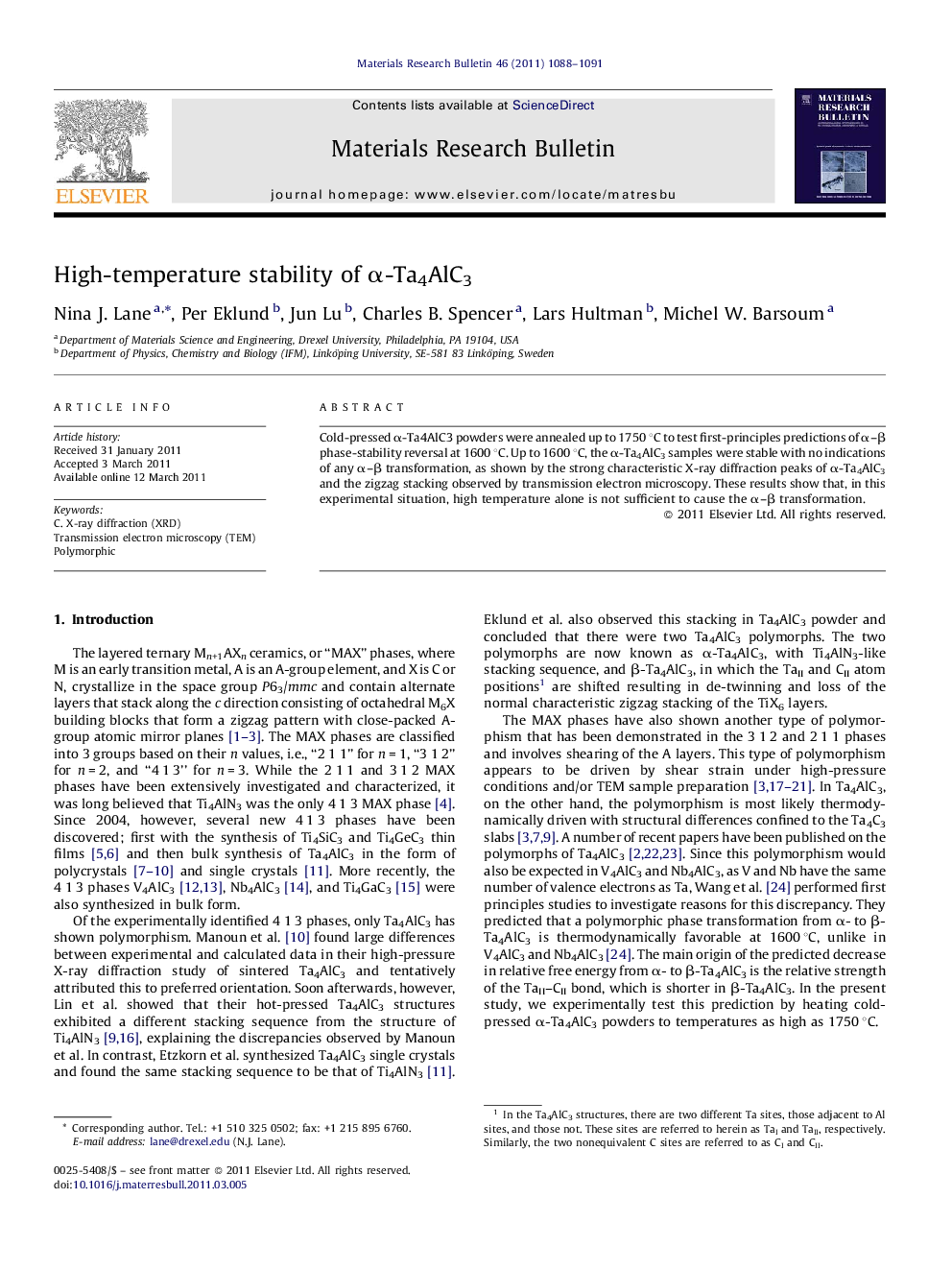| Article ID | Journal | Published Year | Pages | File Type |
|---|---|---|---|---|
| 1490491 | Materials Research Bulletin | 2011 | 4 Pages |
Cold-pressed α-Ta4AlC3 powders were annealed up to 1750 °C to test first-principles predictions of α–β phase-stability reversal at 1600 °C. Up to 1600 °C, the α-Ta4AlC3 samples were stable with no indications of any α–β transformation, as shown by the strong characteristic X-ray diffraction peaks of α-Ta4AlC3 and the zigzag stacking observed by transmission electron microscopy. These results show that, in this experimental situation, high temperature alone is not sufficient to cause the α–β transformation.
Graphical abstractIn this study, stability of α-Ta4AlC3 is investigated to test a hypothesized thermodynamically driven α–β phase transformation. It is found that the α phase is stable up to 1600 °C, with impurities and point defects most likely increasing the stability of the α-Ta4AlC3.Figure optionsDownload full-size imageDownload as PowerPoint slideHighlights► Cold-pressed α-Ta4AlC3 powders are annealed up to 1750 °C to test first-principles predictions of α–β phase-stability reversal at 1600 °C. ► The α-Ta4AlC3 samples are stable up to 1600 °C, with no indications of any α–β transformation. ► Transmission electron microscopy shows zig-zag stacking sequence characteristic of α-Ta4AlC3, as well as tantalum oxide impurities. ► The XRD patterns suggest that defects such as vacancies or antisites may increase the stability of α-Ta4AlC3.
